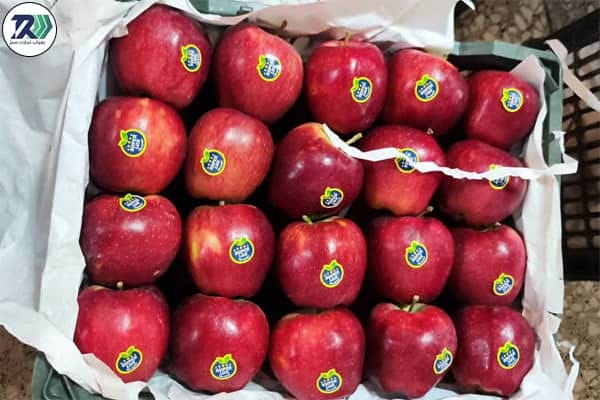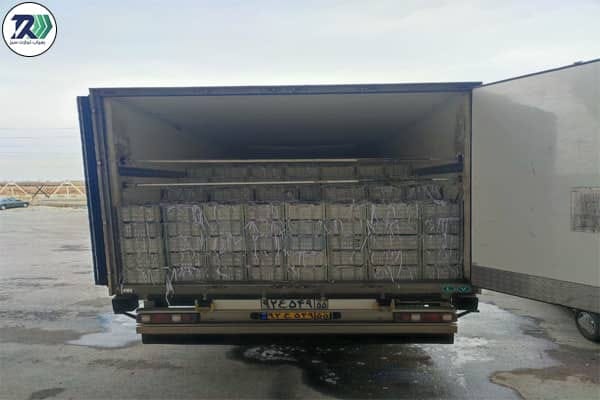Apple is one of the most popular and widely consumed fruits in the world. It has many health benefits and a high nutritional value. Apple is also a valuable commodity for international trade, as it is produced and exported by many countries. In this article, we will provide a comprehensive guide on how to produce, package and export fresh apple fruit In the following, we will talk about the Export Apples to India
What is fresh apple fruit?
Fresh apple fruit is the edible part of the apple tree (Malus domestica), which belongs to the family Rosaceae. It is a climacteric fruit, which means that it continues to ripen even after harvesting. Apples have a round shape, a thin skin, and a fleshy pulp that contains seeds. Apples come in different colors, sizes, shapes, and flavors, depending on the variety and growing conditions.
Apples are rich in antioxidants, dietary fiber, vitamin C, potassium, and other phytochemicals. They can help lower cholesterol, blood pressure, and blood sugar levels, prevent cancer, improve digestion, boost immunity, and protect against various diseases. Apples are also low in calories and fat, and can help with weight management and appetite control.

How to produce fresh apple fruit?
Apple production is a complex and labor-intensive process that involves several stages, such as:
– *Site selection and preparation*: The apple orchard should be located in a well-drained, fertile, and pest-free soil, with adequate sunlight, water, and air circulation. The soil should be tested and amended if necessary, and the site should be cleared of weeds, rocks, and debris.
– *Planting and pruning*: The apple trees should be planted in rows, with enough space between them to allow for growth and maintenance. The trees should be pruned regularly to remove dead, diseased, or damaged branches, and to shape and balance the canopy. Pruning can also improve fruit quality, yield, and pest resistance.
– *Fertilization and irrigation*: The apple trees should be fertilized with organic or synthetic fertilizers, depending on the soil condition and nutrient requirements. The fertilizers should be applied in the spring and summer, before and after flowering, and during fruit development. The apple trees should also be irrigated with drip or sprinkler systems, depending on the climate and water availability. The irrigation should be adjusted according to the soil moisture and weather conditions, and should be avoided during harvest time.
– *Pest and disease management*: The apple trees should be protected from pests and diseases, such as insects, mites, fungi, bacteria, viruses, and rodents. The pest and disease management can be done by using cultural, biological, or chemical methods, or a combination of them. Some of the common pest and disease problems in apple production are apple scab, fire blight, powdery mildew, codling moth, apple maggot, and apple aphid.
– *Harvesting and storage*: The apple fruits should be harvested when they are mature, but not overripe. The maturity can be determined by the color, size, shape, firmness, and flavor of the fruits. The fruits should be picked by hand, with care and gentleness, to avoid bruising, damage, or infection. The fruits should be sorted, graded, and packed in boxes or crates, and stored in a cool, dry, and ventilated place. The storage temperature and humidity should be controlled to prevent decay, shrinkage, or loss of quality.

How to package fresh apple fruit?
Packaging is an important step in the post-harvest handling of fresh apple fruit, as it can extend the shelf life and maintain the quality of the fruits during distribution and transport. Packaging can also provide information, convenience, and appeal to the consumers. The packaging of fresh apple fruit can be done by using different materials and techniques, such as:
– *Wooden boxes*: Wooden boxes are traditional and durable packaging materials that can hold a large amount of fruits. They can also provide good ventilation and insulation, and protect the fruits from mechanical damage. However, wooden boxes are heavy, bulky, and expensive, and can harbor pests and pathogens. They also require special treatment and disposal, and are not environmentally friendly.
– *Corrugated fiber boxes*: Corrugated fiber boxes are made of paperboard, which is lightweight, cheap, and recyclable. They can also provide good cushioning and shock absorption, and can be printed with labels and logos. However, corrugated fiber boxes are not very strong, and can be easily damaged by moisture, heat, or insects. They also have limited ventilation and insulation, and can affect the flavor and aroma of the fruits.
– *Plastic crates*: Plastic crates are made of polyethylene, polypropylene, or polystyrene, which are synthetic and non-biodegradable materials. They are strong, durable, and reusable, and can resist moisture, heat, and insects. They can also provide good ventilation and insulation, and can be stacked and handled easily. However, plastic crates are expensive, and can generate a lot of waste and pollution. They also have a negative impact on the environment and human health.
– *Modified atmosphere packaging (MAP)*: MAP is a technique that involves modifying the composition of the gas inside the packaging, by reducing the oxygen and increasing the carbon dioxide levels. This can slow down the respiration, ripening, and senescence of the fruits, and inhibit the growth of microorganisms. MAP can also preserve the color, texture, and flavor of the fruits, and extend the shelf life. However, MAP is complex, costly, and requires special equipment and materials. It can also cause anaerobic respiration, fermentation, or off-flavors in the fruits, if not done properly.

Annual Export of Red Apples from Iran to India
Iran is one of the major suppliers of apples in the world, and India is one of its main export destinations. According to the United States Department of Agriculture (USDA), Iran exported 27,779 tons of apples to India in 2020, valued at 18,074,000 USD[^1^][1]. This article will explore the reasons behind the high demand for Iranian apples in India, the challenges faced by Iranian apple exporters, and the prospects for future trade.
Why India Prefers Apples from Iran
India is the second-largest producer of apples in the world, after China, with an annual production of 2.35 million tons[^2^][2]. However, domestic production is not enough to meet the growing demand of the Indian consumers, who consume about 2.4 kg of apples per capita per year[^3^][3]. Therefore, India imports apples from various countries, such as Turkey, Chile, Italy, and the US. Among these, Iran has emerged as a preferred source of apples for India, especially in the southern markets.
There are several factors that make Iranian apples attractive for Indian buyers. First, Iranian apples have a shorter transit time compared to other origins, as they can reach India by sea in about 10 days. This reduces the transportation costs and the risk of spoilage. Second, Iranian apples have a competitive price compared to other origins, as they are exempted from import duties under the preferential trade agreement between Iran and India. According to the USDA, the average price per ton of Iranian apples in 2020 was 503 USD, while the average price of US apples was 1,158 USD[^1^][1]. Third, Iranian apples have a good quality and taste, as they are grown in favorable climatic conditions and are harvested at the right time. Iranian apples are also diverse in terms of varieties, sizes, and colors, which cater to the preferences of different segments of the Indian market.

Challenges Faced by Iranian Apple Exporters
Despite the advantages of Iranian apples, there are also some challenges that Iranian apple exporters face in the Indian market. One of the main challenges is the fluctuation of the exchange rate between the Iranian rial and the Indian rupee, which affects the profitability of the trade. The Iranian rial has been depreciating against the Indian rupee due to the US sanctions and the economic crisis in Iran, which makes it difficult for Iranian exporters to set a stable price for their products. Another challenge is the lack of adequate cold storage facilities and packaging standards in Iran, which affect the quality and shelf life of the apples during transportation and storage. Moreover, Iranian apple exporters have to compete with other origins, such as Turkey, which has a larger market share and a better distribution network in India.
Prospects for Future Trade
Despite the challenges, the trade of apples between Iran and India has a lot of potential for growth in the future. According to the USDA, India’s apple imports are expected to increase slightly in the market year 2022-23, as the domestic production is likely to remain stagnant and the consumer demand is likely to recover from the impact of the Covid-19 pandemic[^2^][2]. Iranian apples are expected to continue their strong export growth in the latter half of the market year, as they can benefit from the seasonal gap in the domestic supply and the lower import prices. Furthermore, Iranian apple exporters can explore new opportunities to expand their market share and customer base in India, by improving their quality standards, branding, and marketing strategies, and by establishing long-term relationships with Indian importers and retailers.
The Benefits of Apple Exports from Iran to India
Abstract
The export of apples from Iran to India not only offers economic advantages but also strengthens bilateral trade relations. This comprehensive review delves into the benefits and strategic importance of apple exports to one of the largest consumer markets in the world.
Introduction
Apples are among the most valued fruits globally, and Iran’s climatic conditions are ideal for producing various high-quality apple varieties. With India’s vast consumer base and growing demand for fresh produce, Iranian apples have the potential to carve out a significant share in the Indian market.
Market Overview
India’s burgeoning middle class and its inclination towards a healthier lifestyle have led to an increased demand for fresh fruits, including apples. Iran’s geographical proximity and the existing trade agreements make it a favorable partner for India in meeting this demand.
Advantages of Exporting Apples to India
Economic Growth
Apple exports can significantly boost Iran’s economy by generating foreign exchange revenue and supporting the agricultural sector¹.
Trade Diversification
Entering the Indian market with apples allows Iran to diversify its export portfolio and reduce dependence on traditional export commodities².
Strengthening Diplomatic Ties
Trade often paves the way for stronger diplomatic relations. By exporting apples to India, Iran can reinforce its long-standing ties with India³.
Export Strategies
To capitalize on the market opportunities, Iranian exporters should focus on quality assurance, competitive pricing, and adherence to international export standards. Establishing a robust supply chain and marketing strategy is also crucial for success⁴.
Conclusion
Iran and India have a long history of trade and cultural ties, and apples are one of the products that symbolize this relationship. Iranian apples have a high demand in the Indian market, due to their shorter transit time, competitive price, and good quality. However, Iranian apple exporters also face some challenges, such as the exchange rate fluctuation, the lack of cold storage facilities, and the competition from other origins. To overcome these challenges and to increase their trade potential, Iranian apple exporters need to adopt better practices and strategies to meet the expectations and needs of the Indian consumers.
The export of apples to India represents a lucrative opportunity for Iran to expand its global trade footprint. With strategic planning and government support, apple exports can become a cornerstone of Iran’s trade economy, fostering sustainable economic growth and international cooperation⁵.
We suggest you to visit the Export Kiwi to India page


